Thai New Year is also known as Songkran. It is celebrated for three days from 13th to 15th of April every year on the Gregorian Calendar. Songkran falls on the hottest time of the year in Thailand. It comes from Sanskrit and means 'a move or a change'. The date of Thai New Year was set according to the astrological calculations.
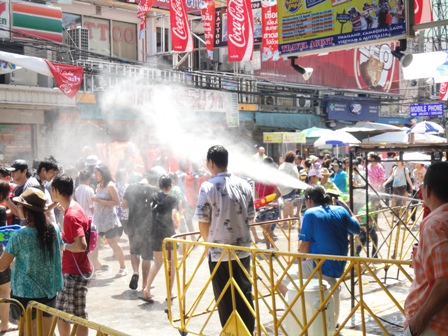
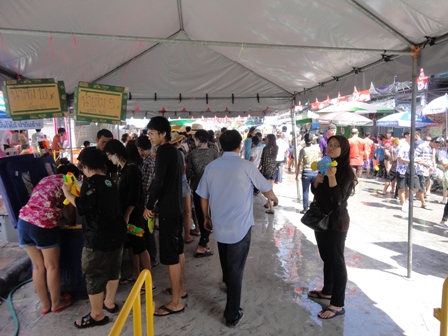
Songkran Customs and Traditions play a vital role in presenting a true picture of New Year celebrations in Thailand. Traditional activities are performed with serious dedication by the people of Thailand. A most common tradition of throwing water over one another is performed with joy by everyone. It is conceived to bring good rains all year ahead. This is called Rohd Nam Songkran, meaning 'The Pouring of Songkran Water'. Wan Sungkharn Lohng is celebrated on April 12. On Wan Sungkharn Lohng, people clean their houses thoroughly and do general preparations for the New Year celebrations. Thai people dress up in new attires to welcome the New Year in a fresh manner. A game called Saba (like skittles)is also played by most of the people.
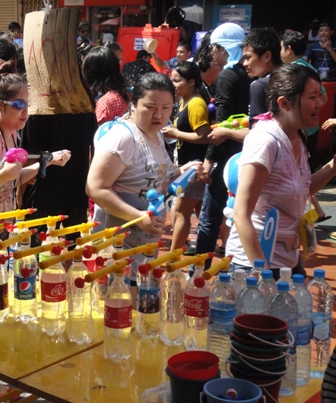
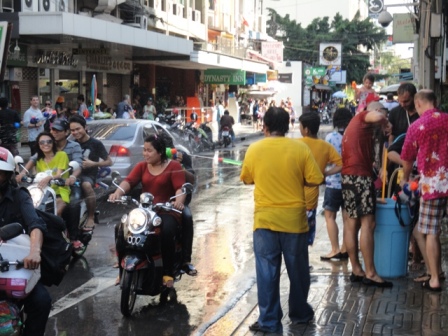
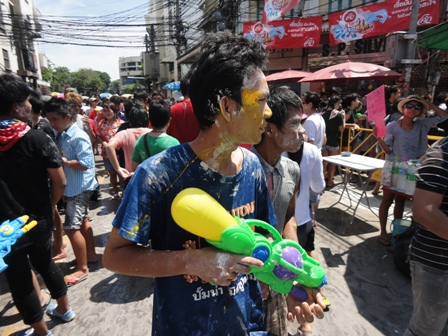
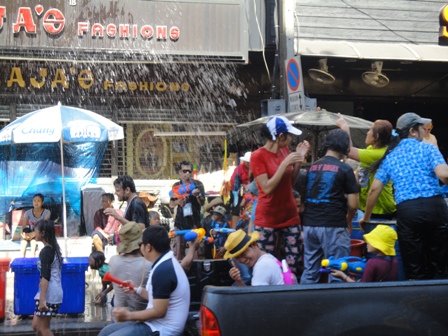
People build pyramids of sand called chedis on the riverbanks and put on a tiny coloured flag on it. This is an example of a very popular tradition of Thai people. Wan Payawan is celebrated on the 14th of April. All statues of Lord Buddha are washed with scented water. People visit monasteries and shrines to offer prayers and gifts like rice, fruits, sweets and food for the monks. Following this is the custom to release birds from cages or fish from the bowls. This is believed to bring good luck for the members of the family. On Wan Parg - bpee day which happens on 15th of April, people pay visit to their ancestors and elders. Songkran Celebrations leave joy and happiness on people's faces. After performing all customs thoroughly, it's time to have some blast. Songkran procession takes place in Chiangmai (a famous place in Thailand) on the 15th of April.

Buddha images and idols are carried through the procession. It is accompanied by people of the city singing and dancing all around. Songkran celebrations are incomplete unless water is thrown at each other. People roam the streets with buckets of water and children play with water guns to drench others. Water is thrown to get rid off all the bad deeds and give a fresh welcome to the New Year. Songkran is celebrated to refresh and renew at the beginning of the New Year. While playing with water, Thais keep wishing Sawatdee pi Maï, basically Happy New Year to all the people they come across. Thai New Year is also the time for special food and dishes. The Khao Chae is a rice dish and Gaeng Kiew Wahn Gai is a Chicken in green curry wgich must be present for the New Year celebrations in Thailand. The sticky rice and the pyramid shaped dessert are present also. The festival gets meaningless without the coconut pancake. Some other dishes which are made during the New Year include:
- Chok - a rice porridge commonly eaten in Thailand for breakfast. Similar to the rice congee eaten in other parts of Asia
- Khao khai chiao - an omelet (khai chiao) with white rice eaten with a chili sauce and few slices of cucumber
- Khao tom - Thai style rice soup eaten with pork, chicken or shrimp
- Khao khluk kapi - Stir-fried rice eaten with shrimp paste which is served with sweetened pork and vegetables
- Khao phat American – An American fried rice found only in Thailand
- Khao phat kai - fried rice with chicken
- Khao phat moo - fried rice with pork
- Khao phat poo - fried rice with crab meat
- Khao phat koong - fried rice with shrimp
- Khao phat naem - fried rice with fermented sausages, a typical dish from the North-east)
- Khao soi - crispy wheat noodles in sweet chicken curry soup (a Northern dish)
- Chaokuai - grass jelly is often served with shaved ice and brown sugar
- Khanom bua loi – taro root mixed with flour - made into balls and dumped in coconut milk
- Khanom chan – multi-layers of pandan-flavored sticky rice flour mixed with coconut milk
Source : Niloofar-e-Abi